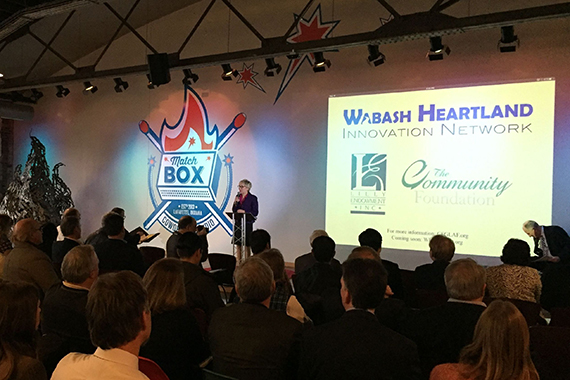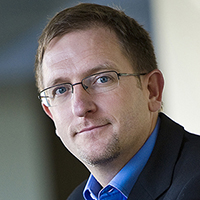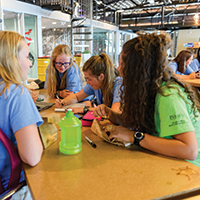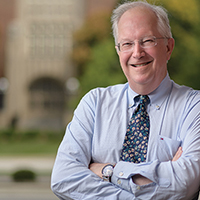 The Wabash Heartland Innovation Network (WHIN), a consortium of 10 counties in Northwest Indiana, was funded in 2017 by a $39 million grant from Lilly Endowment Inc. (Photo provided)
The Wabash Heartland Innovation Network (WHIN), a consortium of 10 counties in Northwest Indiana, was funded in 2017 by a $39 million grant from Lilly Endowment Inc. (Photo provided)
Krannert Takes Formative Role in Local Innovation Network
WHIN and Purdue lead the way into the future of agriculture, manufacturing
Can you picture a Silicon Valley … in Indiana?
Within the next five years, Northwest Indiana is aiming to make its mark as a developing global epicenter, technologically revolutionizing agriculture and manufacturing. Leaders envision a hub that draws innovative new businesses and prosperity to the region.
Community leaders and local economic developers are collaborating with Purdue University to create the Wabash Heartland Innovation Network (WHIN), a consortium of 10 counties in Northwest Indiana that already is leading the state in agriculture and manufacturing. It was funded in 2017 by a $39 million grant from Lilly Endowment Inc.
Steve Dunlop, managing director of Dauch Center for the Management of Manufacturing Enterprises (DCMME) at Krannert, says, “The WHIN grant for the 10-county region focuses on one of the largest manufacturing sectors in the state and Purdue’s role in enabling its competitiveness.”
But what could make the region revolutionary is the technology of the future — the Internet of Things (IoT) — which the McKinsey Global Institute estimated in 2014 would reach an impact of $3.9 trillion to $11.1 trillion by 2025.
IoT is the technology that connects objects with sensors and the internet, ultimately causing tools to function in a capacity more individualized to their user — saving money and effort. For instance, Nest is an IoT-categorized thermostat that can be controlled from a mobile app, can track its user’s habits and use the data to anticipate the user’s needs. Because of this technology, the thermostat can learn the user’s preferred temperature and their schedule, then independently initiate those actions.
WHIN is working toward making Northwest Indiana an economic global leader in the use of IoT by focusing on three tiers — digital agriculture, next-generation manufacturing and a cultivation fund.
In the next-generation manufacturing category, Krannert is leading multiple initiatives. DCMME is working on developing a curriculum for a variety of courses and certification programs.
“If we’re going to be using Internet of Things and sensors, the workforce needs to understand technology, and we need to develop appropriate return on investment goals, so there’s a training and education component,” Dunlop says.
But they’re also developing a supply chain tool to retain more money in the region. Krannert’s Global Supply Chain Management Initiative (GSCMI) is a tool designed to reduce supply chain leakage, which occurs when manufacturers source their components outside the region. This tool is mapping all manufacturers and their capabilities so that new supply chains can be prototyped to develop emerging products and services.
Professor Ananth Iyer, director of DCMME says, “This supply chain tool will provide valuable data for new economic opportunities and will leverage research tools that have been developed by Krannert faculty in past projects. It thus represents the ideal opportunity for Purdue to enable local economic activity.”
Finally, WHIN has established a cultivation fund intended for the enhancement of the community, making it an attractive place for relocation.
According to the WHIN website, “WHIN has dedicated $10 million for the Regional Cultivation Fund (RCF). This is for planning and implementation for quality-of-life projects, from education to green space to economic development. The RCF will help attract and retain residents to the region while still advancing WHIN’s overall goals.”
The DCMME and GSCMI centers and their engagement with WHIN offer “an amazing opportunity to leverage our research skills and our graduate students to engage with business in the WHIN area,” building on Krannert’s legacy, Iyer says.







